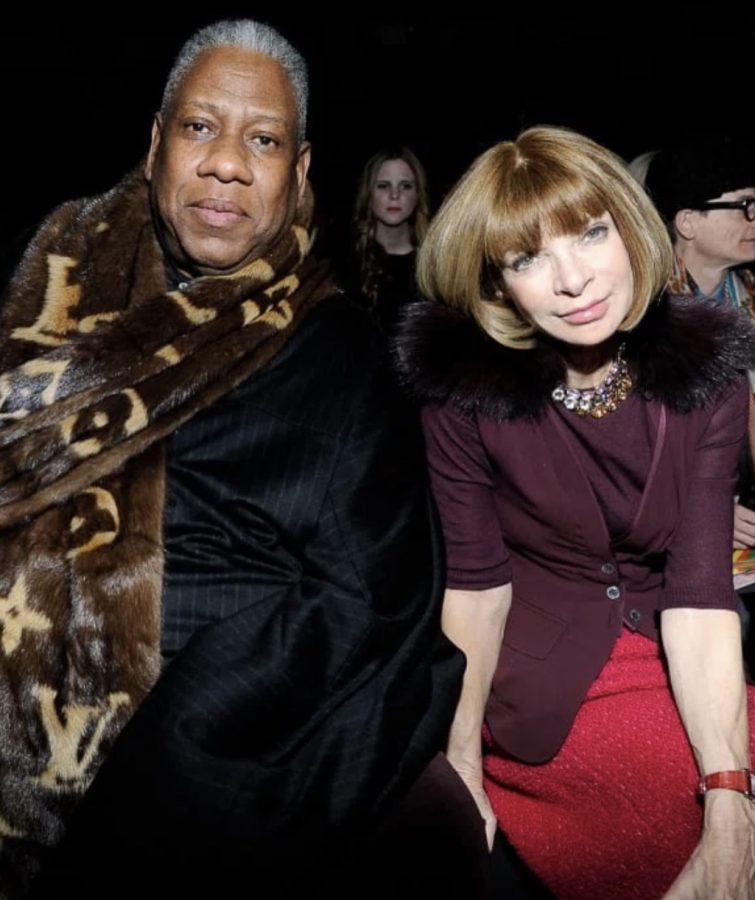Creativity: the difference between intelligent and iconic

More stories from Coco Corey
André Leon Talley, the former Vogue creative director and editor at large, died on Tuesday, Jan. 18, 2022 at age 73. He was considered a trailblazer in fashion journalism and the Black and LGBTQ+ communities; Talley was Vogue’s first, and only, African American male creative director.
Anyone who knows me knows of my love of the book (and the movie adaptation) The Devil Wears Prada. Talley was considered the inspiration for the beloved character of Nigel. But really, Talley was so much more than the character portrayed in his likeness, and there easily could’ve been a movie centered around his own life.
He grew up in North Carolina, where he talks about spending his days tearing out pages of Vogue magazine and tacking them up on the walls of his room.
“In those days, the fashion magazine came out twice monthly and each time, Talley would walk ‘from the Black part of town where I lived in my grandmother’s house, across the tracks to Duke University and the campus where they had a newsstand that would sell Vogue…My escape hatch was Vogue’ he said” (“Vogue was my escape hatch!” André Leon Talley on Warhol, Wintour and weight interventions, 2018).
Talley started his career by tearing out pages of Vogue and ended up at the top of the fashion industry. How does a kid so far removed from the fashion world rise to the top of the empire? He was smart and loved fashion, but so do thousands of others. Creativity. Talley possessed a creative mind that propelled him beyond others, and that won him the position of creative director at Vogue.
Are we born with creativity or is it cultivated by how we live? Why are some individuals far more creative than others? Is there a link between risk-taking/rule-breaking and creativity?
Walt Disney was said to have had a “creative kitchen” in every place he lived. He was reported to have a room where he would have musical instruments, chalkboards, painting supplies, anything and everything that might spur on creativity. However, we are finding out that it’s not the creative tools at our disposal so much as our mindset that makes up our creative side.
Often, we think of creative people as less than strictly academic people, however, that is far from the truth. Creative minds are extremely complex. According to Psychology Today, “Creative people embody complexity; they show tendencies of thought and action that are segregated in others, according to the pioneering creativity researcher Mihaly Csikszentmihalyi. They balance intense energy with quiet rest, playfulness with discipline, fantasy with reality, and passion for their work with objectivity” (Creativity | Psychology Today, 2019).
Psychology measures creative thinkers by those who exhibit divergent thinking. Divergent thinking is what we have heard of as being “outside the box.” Basically, it’s brainstorming a use for something or a way of doing something in a multitude of different ways. With divergent thinking, the more the better; there is no one answer. Convergent thinking, however, involves coming up with the “right “ answer. A multitude of ideas is how we measure divergent thinking, yet, the most creative people describe their most creative moments as surges of momentum towards only one of their ideas.
The article claims that: “…there remains the nagging suspicion that at the highest levels of creative achievement the generation of novelty is not the main issue. People often claimed to have had only two or three good ideas in their entire career, but each idea was so generative that it kept them busy for a lifetime of testing, filling out, elaborating, and applying” (The Creative Personality, 2016).
Real genius comes in recognizing a groundbreaking concept and standing behind it. An article in Fast Company states that, “…the secret to creativity lies in hitting “hot streaks,” or bursts of repeated successes… the study explores exactly what people do before and during a hot streak. The pattern goes something like this: Artists experiment with myriad formats, styles, and ideas for months, sometimes years, before they zero in on one of those experiments…” (Brandon, 2021). When an artist finally does zero, that is when their “hot streak” begins.
Creative people are seen as flighty or airheads or daydreamers, but these stereotypes are far from true. They dream, but they can also discern if an execution doesn’t live up to their vision. These people are critical and realistic; not everything different hits the mark, and they have high expectations. Creative minds combine divergent thinking with convergent thinking. They are visionaries who know how to convince the status quo. Talley has all of these attributes in a creative genius and fashion icon—may he rest in peace.

Coco Corey is a senior entering her second year writing for The Central Trend. Coco plays on the tennis team, and she is also one of the four student section...


























































































